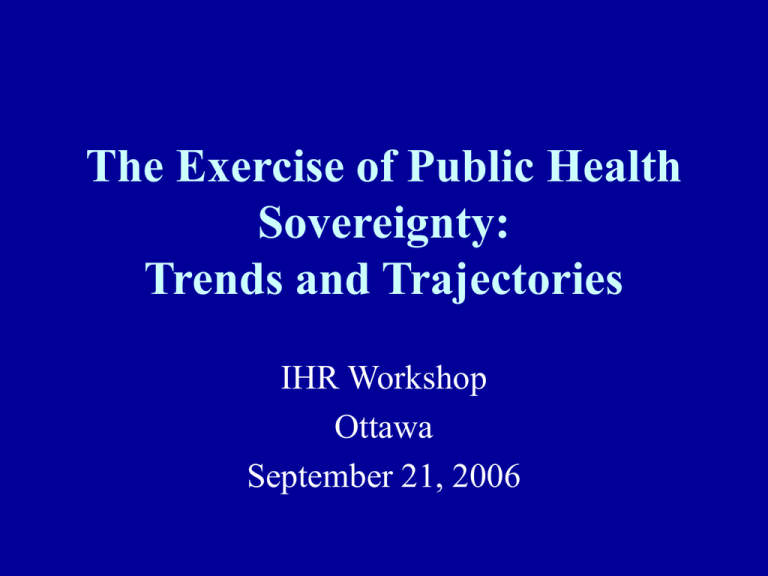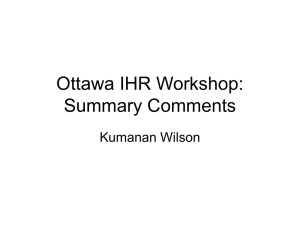The Exercise of Public Health Sovereignty: Trends and Trajectories IHR Workshop
advertisement

The Exercise of Public Health Sovereignty: Trends and Trajectories IHR Workshop Ottawa September 21, 2006 Public Health Sovereignty • The implementation of the IHR 2005 raises many questions concerning changes in how nation-states exercise their sovereignty in terms of public health (public health sovereignty). • Public health sovereignty in two senses – In the international context (international law) – Within states (constitutional, domestic law) 2 Four Trends from the Workshop • From intergovernmental cooperation to the globalization of governance • From decentralized government towards the centralization of governance • From complacency in government towards intensification of governance • From heterogeneity of approaches toward harmonization of strategies and operations 3 Interdependent Trends Globalization Harmonization Centralization Intensification 4 Public Health Sovereignty and Governance: Transformations Globalization Centralization Intensification Harmonization Public health’s “new world order” 5 Examples from the Workshop • Globalization of governance= IHR 2005 – More authority for WHO – Involvement of non-state actors – More demanding obligations on WHO member states • Centralization of governance: the growing role of federal/national governments in public health, esp. infectious diseases • Intensification of governance: the scaled-up activities of nonfederal governments (e.g., China, India, France, Russia) • Harmonization of governance: the importance of the IHR 2005, the changed nature of federal/sub-federal cooperation 6 The Trends as Trajectories: Driving Factors • The heightened public health importance of new information and communication technologies • The design of new public health strategies for globalized problems • Conceptual changes in thinking about public health challenges (e.g., global health security, national health security) • Involvement of non-governmental actors in governance activities • The demand for and supply of new legislation/ norms/SOPs/MOUs 7


